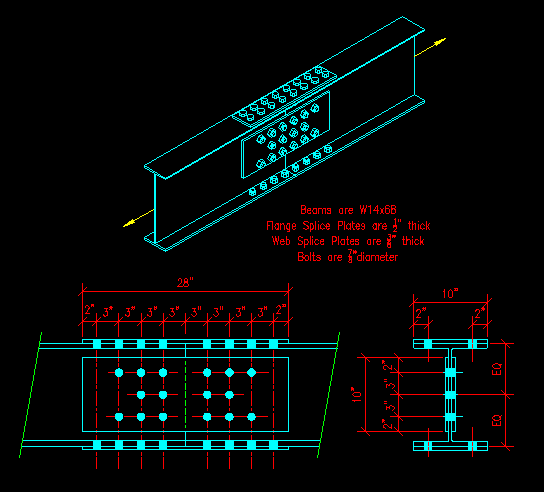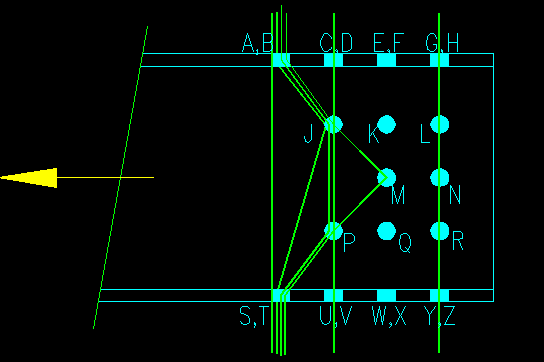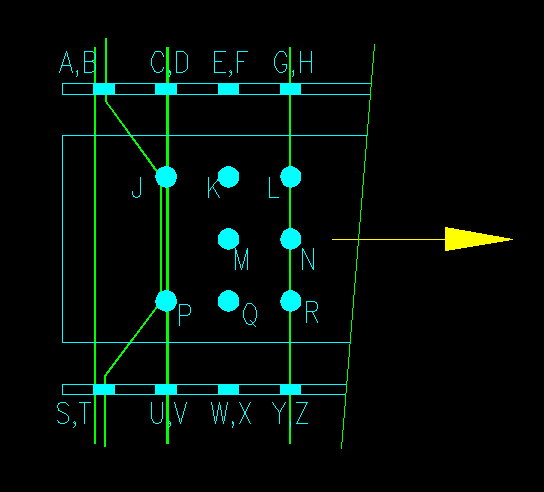
Example #3
In this example we will connect two W14x68s with (4) 3/8" thick splice plates as shown in Figure FP-3a.

Figure FP-3a
Tension Splice for Two W Sections
This connection consists of six members: two W sections and four plates. The two W sections are identical and the splice plates are of two different sizes and bolt configurations. For this example, consider the four splice plates to be one member acting together (we can do this because they share the full force as the force is transferred between the W sections)
Figure FP-3b shows a FBD for the end of a W section with several possible failure paths. Hopefully you are getting the idea about failure paths, so the path selections shown are only a reduced subset of all possible paths but contains the valid path(s).

Figure FP-3b
FBD of W Section End
Note that the flanges have two bolt holes at each location, hence the dual labels at the holes shown in profile on the flanges. There is no stagger to the flange bolts. (See Figure FP-3a).
Click the link for each path to see if it is valid or not. Try to figure out which is valid before checking! For the valid paths, you will be asked to identify the failure path length and the associated net area of the plate.
Let's now look at the splice plates.
Figure FP-3c shows an FBD of the end of the splice plates with some of the same failure paths considered for the W section. Again there are more potential failure paths than shown, but the given set includes the valid failure path(s).

Figure FP-3c
FBD of the Splice Plate End
Click the link for each path to see if it is valid or not. Try to figure out which is valid before checking! For the valid paths, you will be asked to compute the failure path length and the associated net area of the plate.